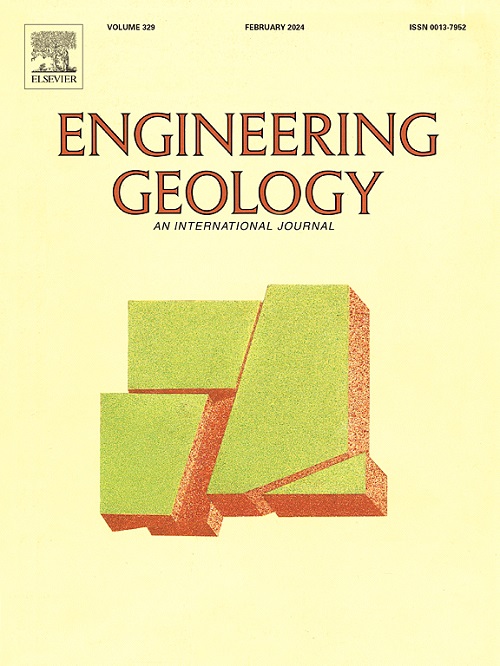以人为负荷作为额外触发因素的四年滑坡观测 - 物理参数的季节和年度变化分析
IF 6.9
1区 工程技术
Q1 ENGINEERING, GEOLOGICAL
引用次数: 0
摘要
确定滑坡的结构和演变对于地球物理危害评估至关重要。在这项研究中,我们采用了一种整合了多通道表面波分析(MASW)和电导率的方法,对波兰南部一处滑坡的时空变化进行成像。该地区位于外喀尔巴阡山脉,气候起伏较大,再加上需要人工造雪的休闲滑雪等人为活动,使得该地区的气候波动更为剧烈。包括数据聚类和遥感在内的其他分析确定了三个不同的滑坡区,这些滑坡区对自然和人为影响的脆弱性各不相同。这项研究填补了人们对湿气驱动滑坡的随时间变化的地球物理观测的认识空白,为灾害识别和减灾战略提供了宝贵的见解。本文章由计算机程序翻译,如有差异,请以英文原文为准。
Four years of landslide observation with anthropogenic loading as an additional trigger - Analysis of seasonal and annual variability of physical parameters
Determining the structure and evolution of landslides is crucial for geophysical hazard assessment. In this study, we employed an approach integrating the methodologies of multi-channel analysis of surface waves (MASW) and electrical conductivity to image temporal and spatial changes within a landslide in southern Poland. The area, located in the Outer Carpathians, experiences significant climate fluctuations, compounded by anthropogenic activities such as recreational skiing requiring artificial snow.
Our combined seismic and electrical methods techniques reveal the landslide's susceptibility to environmental factors on both annual and seasonal scales. Additional analysis, including data clustering and remote sensing, identifies three distinct landslide zones with varying vulnerability to natural and anthropogenic influences.
While focusing on a specific area, our approach has global applicability to similar mass movements. This research addresses a gap in understanding time-dependent geophysical observations of moisture-driven landslides, providing valuable insights for hazard identification and mitigation strategies.
求助全文
通过发布文献求助,成功后即可免费获取论文全文。
去求助
来源期刊

Engineering Geology
地学-地球科学综合
CiteScore
13.70
自引率
12.20%
发文量
327
审稿时长
5.6 months
期刊介绍:
Engineering Geology, an international interdisciplinary journal, serves as a bridge between earth sciences and engineering, focusing on geological and geotechnical engineering. It welcomes studies with relevance to engineering, environmental concerns, and safety, catering to engineering geologists with backgrounds in geology or civil/mining engineering. Topics include applied geomorphology, structural geology, geophysics, geochemistry, environmental geology, hydrogeology, land use planning, natural hazards, remote sensing, soil and rock mechanics, and applied geotechnical engineering. The journal provides a platform for research at the intersection of geology and engineering disciplines.
 求助内容:
求助内容: 应助结果提醒方式:
应助结果提醒方式:


